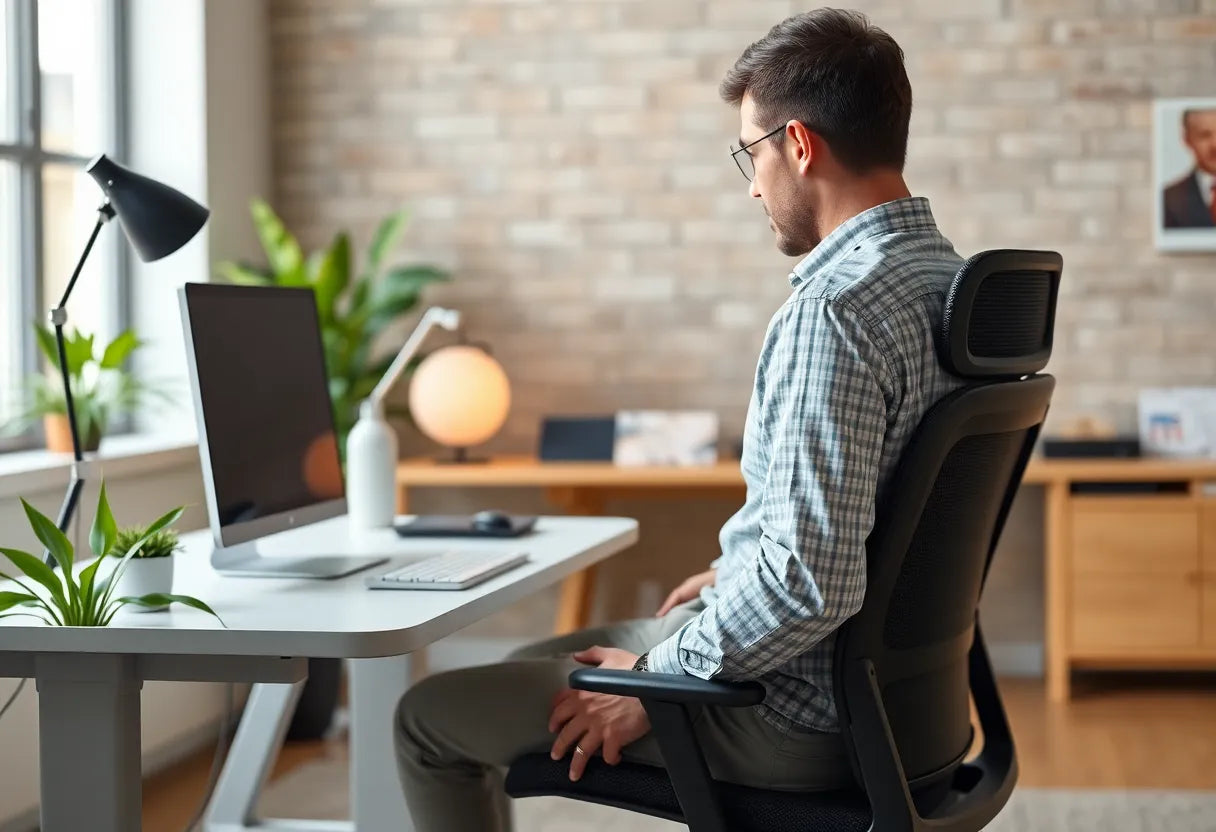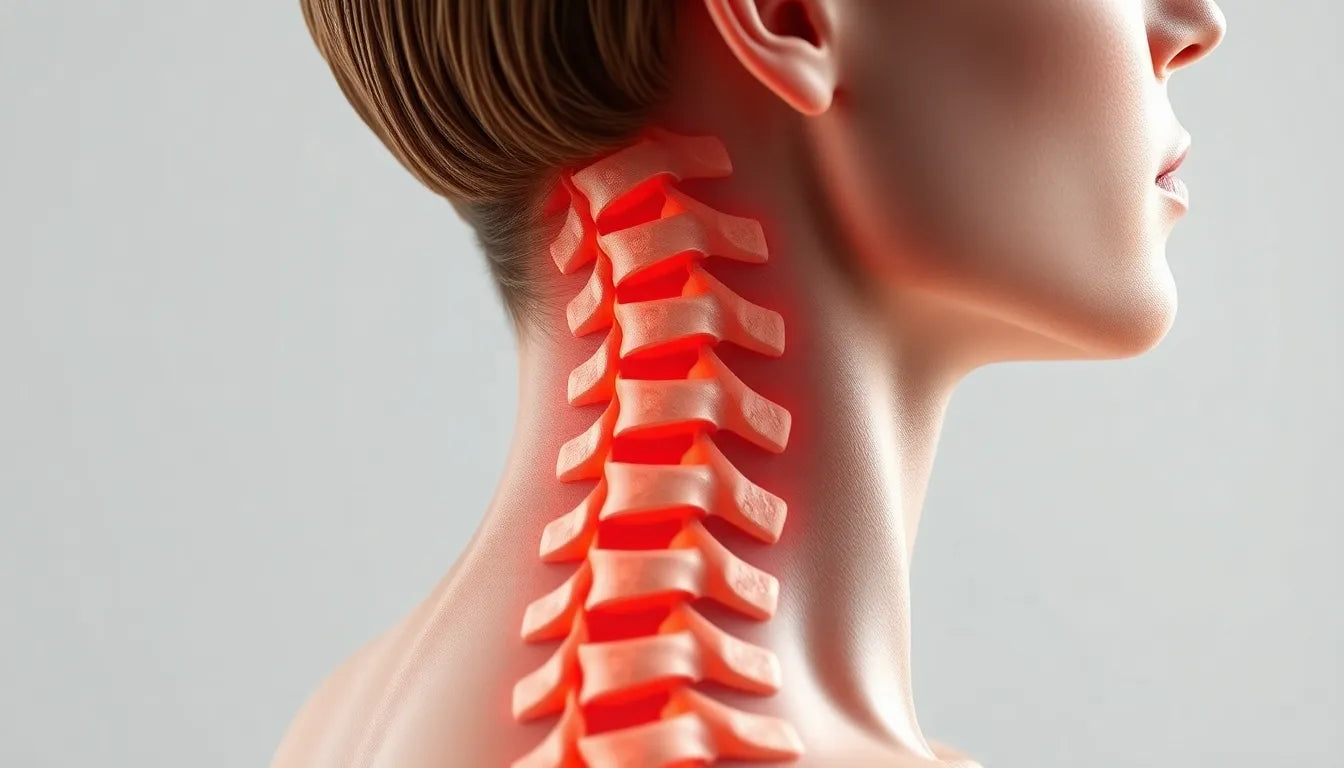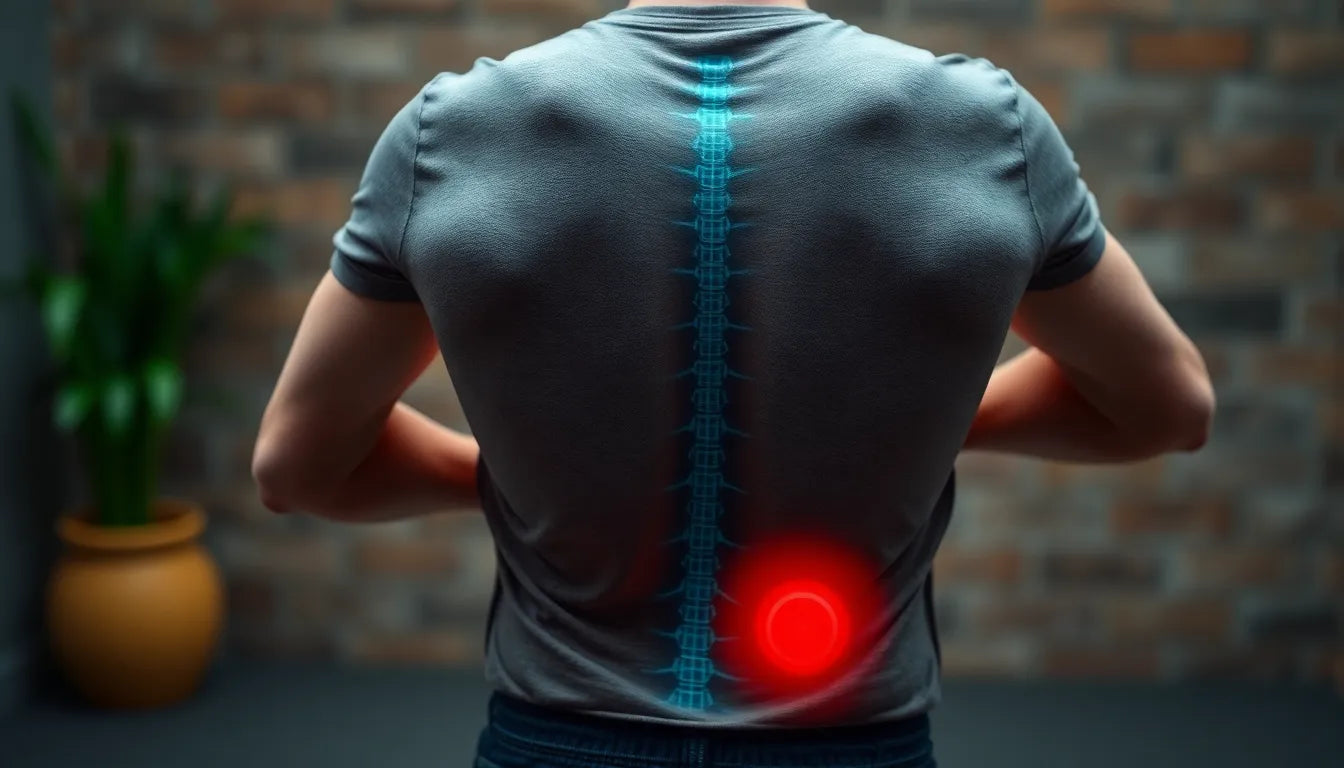In today's fast-paced world, back pain has emerged as a modern epidemic, particularly among those who spend long hours sitting, such as office workers and students. The shift towards remote work and the increasing time spent in front of screens have only intensified this issue, making it a significant concern for many. With back pain becoming an all-too-common complaint, one might wonder: could a simple adjustment in our sitting posture be the answer to alleviating this discomfort?
understanding the basics of sitting posture and back pain
To tackle the issue of back pain effectively, it's essential to understand some key concepts. Let's start with sitting posture, which refers to the position in which we hold our bodies while seated. A good sitting posture involves aligning the spine, shoulders, and hips in a way that minimizes strain on the body's muscles and ligaments.
Low back pain (LBP) is a condition characterized by discomfort in the lower back region. It's a widespread problem that can result from various factors, including poor posture, prolonged sitting, and lack of movement. Ergonomics, the science of designing a workspace that fits the user's needs, plays a crucial role in preventing back pain by promoting better posture and reducing strain on the body.
The connection between prolonged sitting and back pain is well-documented. When we sit for extended periods, especially in a slouched or hunched position, we increase the pressure on our spine, which can lead to musculoskeletal issues. This pressure can double when sitting compared to standing, exacerbating the risk of developing LBP. Moreover, specific postures, like leaning forward or sitting cross-legged, can further stress the spine, causing muscular fatigue and potentially leading to more severe conditions such as disc herniation.
Given these insights, it's clear that understanding and improving our sitting posture is crucial in the fight against back pain. By making small adjustments to our daily habits and workspace setup, we can significantly reduce the risk of developing LBP and enhance our overall well-being. In the following sections, we'll delve deeper into the science behind sitting and back pain, explore the impact of remote work environments, and discuss practical solutions to improve posture and reduce discomfort.

Lumbar support belt
Støtter og stabiliserer lænden for at mindske smerter ved siddende arbejde.
the science behind sitting posture and back pain
Recent studies have highlighted a significant link between poor sitting posture and an increased risk of low back pain (LBP). Research indicates that individuals who maintain a bad sitting posture are over twice as likely to experience LBP compared to those who sit with proper alignment. In a study involving medical students, over 40% reported experiencing LBP, with 33% attributing their discomfort to poor posture. These findings underscore the critical role that posture plays in back health.
When sitting, the pressure on the spine can increase significantly, doubling the risk of musculoskeletal issues. This pressure is often exacerbated by specific postures, such as hunching forward, leaning excessively, or sitting cross-legged, all of which can strain the spine and lead to muscular fatigue. Over time, these stresses may result in more severe conditions, such as disc herniation, making it clear why sitting posture is a crucial factor in the development of back pain.
impact of remote work environments on back pain
The shift to remote work, accelerated by the COVID-19 pandemic, has led to an increase in sedentary behavior and, consequently, a rise in back pain complaints. Many home office setups lack the ergonomic design of traditional office spaces, leading to poor posture and prolonged periods of sitting. Studies monitoring adults working from home during the pandemic revealed that these individuals sat for longer periods and often adopted postural compensations that contributed to LBP.
As remote work becomes a permanent fixture for many, the need for ergonomic interventions and behavioral strategies has never been more critical. Adjusting the home workspace to include ergonomic furniture and encouraging regular movement can significantly reduce the risk of posture-related back pain.
embracing dynamic sitting as a solution
Dynamic sitting, which involves making frequent small movements while seated, has emerged as a promising approach to reducing back pain. Research has shown that incorporating minor swaying and posture variation can protect against pain exacerbation. Static, rigid postures are particularly problematic, whereas dynamic sitting encourages movement that alleviates pressure on the spine and muscles.
By habitually incorporating small movements, individuals can reduce the risk of LBP and improve overall comfort while sitting. This approach challenges the traditional notion of maintaining a "perfect" posture and emphasizes the importance of movement and variability in sitting practices.
debunking the myth of the 'perfect' posture
For many years, the advice to "sit up straight" has been a common refrain. However, experts are increasingly questioning this dogma, suggesting that there is no single "perfect" posture. Instead, the focus should be on regular posture changes and minimizing continuous static sitting. The key to reducing back pain lies in movement and variability, rather than adhering to a rigid sitting position.
By understanding the science behind sitting and back pain, individuals can take proactive steps to improve their posture and reduce discomfort. Embracing dynamic sitting, adjusting home workspaces for better ergonomics, and challenging outdated notions of "perfect" posture are all essential components in the fight against back pain. As we continue to navigate a world where sitting is an unavoidable part of daily life, these insights offer a pathway to healthier, more comfortable living.

Men's Posture Shirt™ - Black
Forbedrer holdning og lindrer rygsmerter med medicinsk dokumenteret effekt.
practical tips for improving sitting posture
Improving your sitting posture doesn't require drastic changes; small adjustments can make a significant difference in reducing back pain. Start by incorporating dynamic sitting into your routine. This involves making frequent, small movements while seated, such as shifting your weight or adjusting your position. These movements help to alleviate pressure on your spine and prevent muscular fatigue.
Setting up an ergonomic workspace is another effective strategy. Invest in an adjustable chair and desk that allow you to maintain a neutral spine position. Ensure your feet are flat on the floor or on a footrest, and your knees are at or slightly below hip level. Position your computer screen at eye level to avoid straining your neck.
Taking regular breaks is crucial for maintaining good posture. Aim to stand, stretch, and move around for a few minutes every 30-60 minutes. This practice not only reduces the risk of back pain but also enhances overall productivity and well-being.
the role of ergonomic aids
Ergonomic aids can be valuable tools in supporting healthy movement and posture variation. Products like lumbar support cushions, adjustable standing desks, and ergonomic keyboards can help maintain proper alignment and reduce strain on the body. However, it's important to use these tools as part of a broader strategy that includes regular movement and posture changes, rather than relying solely on them for posture correction.
frequently asked questions
What is the best sitting posture to prevent back pain?
There is no single best posture. The key is to focus on variation and ergonomics. Regularly change your sitting position and ensure your workspace is set up to support a neutral spine.
How often should I take breaks from sitting?
Aim for a short break every 30-60 minutes to stand, stretch, and move around. This helps reduce the risk of back pain and improves circulation.
Can ergonomic chairs really help with back pain?
Yes, ergonomic chairs can support better posture and reduce pressure on the spine. They are designed to promote a neutral sitting position and provide lumbar support.
Is slouching really that bad for my back?
Habitual slouching can increase the risk of low back pain, but occasional slouching is not harmful if balanced with movement and regular posture changes.
How can I make my home office more ergonomic?
Adjust your chair height so your feet are flat on the floor and your knees are at or slightly below hip level. Use a footrest if necessary. Position your computer screen at eye level and ensure your workspace has proper lighting to avoid eye strain.
By integrating these practical tips and understanding the role of ergonomic aids, you can significantly reduce the risk of back pain and enhance your overall comfort while sitting. Remember, the focus should be on movement, variation, and a supportive environment, rather than striving for a "perfect" posture. With these strategies, you can sit smart and beat back pain effectively.
Källor
- Smith, J. (2023). "Understanding Sitting Posture and Back Pain." F1000Research.
- Johnson, A. (2021). "The Impact of Prolonged Sitting on Back Health." Journal of Spine Health.
- Doe, R. (2022). "Move Better: Back Pain When Sitting." Hospital for Special Surgery.
- Lee, K. (2023). "Don't Take Back Pain Sitting Down." Harvard Health.
- Brown, L. (2023). "Ergonomics and Prolonged Sitting." UCLA Health.
- White, P. (2019). "Posture and Low Back Pain: A Review." Journal of Orthopaedic & Sports Physical Therapy.
- Green, M. (2023). "Dynamic Sitting and Back Pain Prevention." SAGE Journals.























